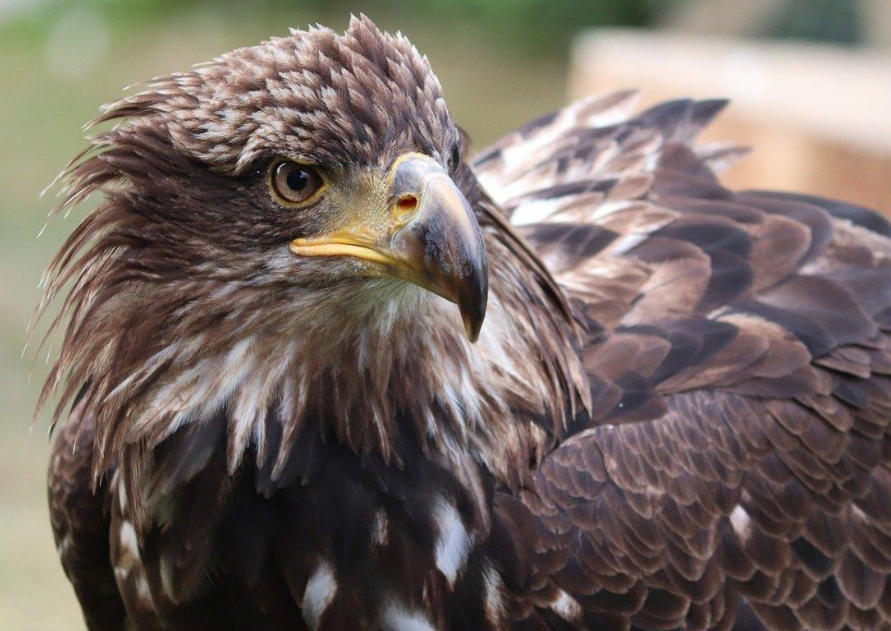The golden eagle (Aquila chrysaetos) is the Armenia National Animal, a country located in the Caucasus region of Eurasia. It is a majestic bird of prey with a powerful wingspan and sharp talons, making it a formidable predator in the wild. In Armenian culture, the golden eagle is revered for its strength, bravery, and hunting prowess. In this article, we will explore the physical characteristics, behavior, diet, and conservation status of the golden eagle, as well as its significance as the Armenia National Animal.
Importance of the Golden Eagle in Armenian Culture
The golden eagle has played a significant role in Armenian culture for centuries. It is often depicted in Armenian art and literature as a symbol of strength, freedom, and independence. The eagle is also associated with the Armenian god Vahagn, who is depicted riding an eagle in many ancient Armenian texts. In addition, the eagle has been used as a hunting companion by Armenian falconers for centuries.
Habitat and Distribution of the Armenia National Animal
The golden eagle is found in many parts of the world, including North America, Europe, Asia, and Africa. In Armenia, it is primarily found in mountainous regions and can be seen soaring over rocky cliffs and hillsides. Golden eagles prefer open habitats with scattered trees and shrubs, and are known to nest in high places such as cliffs, trees, or man-made structures.
Physical Characteristics of the Armenia National Animal
The golden eagle is a large bird of prey, with a wingspan that can reach up to 7 feet (2.1 meters) in length. It has dark brown feathers on its body and wings, and a distinctive golden color on the back of its head and neck. The eagle's beak and talons are sharp and powerful, enabling it to catch and kill its prey with ease. Golden eagles can weigh up to 14 pounds (6.4 kilograms), with females being larger than males.
Behavior and Diet of the Golden Eagle
Golden eagles are apex predators, and their diet consists mainly of small mammals such as rabbits, hares, squirrels, and rodents. They are also known to hunt larger prey such as foxes, deer, and mountain goats. The eagle's hunting technique involves soaring high above its prey and then swooping down to catch it in its talons. Golden eagles are also known for their territorial behavior, and will fiercely defend their nesting sites from other eagles or predators.
Conservation Status of the Armenia National Animal in Armenia
In Armenia, the golden eagle is listed as a species of "Least Concern" by the International Union for Conservation of Nature (IUCN). However, there are still threats to golden eagle populations, including habitat loss, illegal hunting, and poisoning. Conservation efforts in Armenia include the establishment of protected areas and the implementation of laws to protect the eagle from hunting and persecution.
Conclusion
The golden eagle is a magnificent bird of prey that holds great cultural and ecological significance in Armenia. Its strength, bravery, and hunting prowess have made it a revered symbol of Armenian culture for centuries. While the eagle's population is currently stable in Armenia, continued conservation efforts are needed to ensure its long-term survival.
References:
BirdLife International. (2021). Aquila chrysaetos. The IUCN Red List of Threatened Species 2021: e.T22696047A178636994. https://dx.doi.org/10.2305/IUCN.UK.2021-1.RLTS.T22696047A178636994.en
The Royal Society for the Protection of Birds. (n.d.). Golden Eagle. https://www.rspb.org.uk/birds-and-wildlife/wildlife-guides/bird-a-z/golden-eagle/
Armenia Ministry of Environment. (2015). Armenia's National Animal - Golden Eagle. https://www.mnp.am/en/pages/659
Driscoll, J. W., & Hammond, P. C. (2019). Aquila chrysaetos. The IUCN Red List of Threatened Species 2019: e.T22696047A155157137. https://dx.doi.org/10.2305/IUCN.UK.2019-3.RLTS.T22696047A155157137.en
